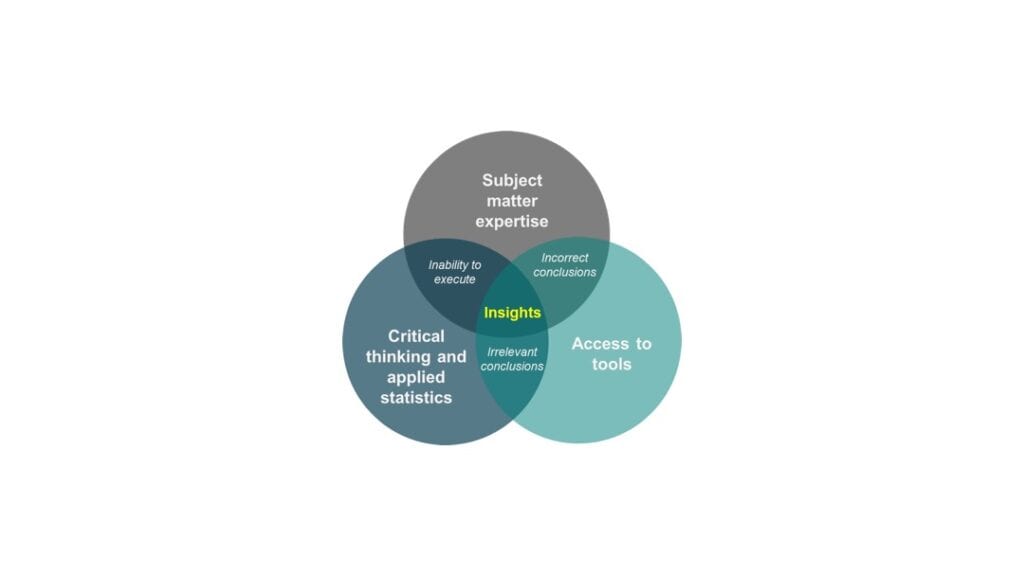
Given the extraordinary adoption of communication technology, everyone in PR has a tool and data.
While counterintuitive, broad acceptance of technology to advance productivity and efficiency reveals a greater need for the human elements required to manage tools and think about data they generate.
Moreover, as analytics software enables new and better choices, communication data and analysis expertise and judgement lag. The result is that more communicators risk mismanaging, misinterpreting and misapplying data.
Phillip B. Stark, professor and chair of statistics, University of California, Berkeley, notes, “The type of data isn’t the point at all. The way of thinking matters.”
Stark’s schematic below demonstrates essential elements of communication data science, two-thirds of which require human contribution. In the diagram, Access to Tools represents technology-enabled execution.
Without experts’ input, though, technology is utterly stupid. Even AI requires training before it can think for itself.

A Mix of Humans and Tools
Rather than the instant insight-engines buyers expect, data-informed communication exceeds the power that technology alone provides. Communication research, analysis and evaluation require subject-matter expertise, statistical skills and critical thinking to achieve meaningful insight.
Subject Matter Expertise is a keen understanding of a company’s situation, PR and media. Statistical skills and critical thinking enable the communicator to reliably uncover stories the data reveals.
Just as tools, statistical acumen and subject matter expertise enable insight, overlooking any single element brings significant consequences.
•Inability to Execute: If you understand PR and statistics, but lack technology, you won’t uncover scalable insights.
Instead, computation will require time-consuming manual approaches. The result is an overworked staff and the loss of analytical talent owing to repetitive, mundane tasks. Without technology, the staff must focus on cleaning, processing and analyzing volumes of data without applying their skills for meaningful and satisfying outcomes.
•Inaccurate Conclusions: If you have subject-matter expertise and technology without critical thinking and statistical acumen, the organization is vulnerable to drawing the wrong inferences, even from good data. Worse, communicators may make bad choices in the absence of the critical information required to achieve objectives.
•Irrelevant Conclusions: When tools and critical thinking are available, but subject matter expertise is missing, the company is vulnerable to worthless answers to the wrong questions. In addition, the organization lacks the understanding to uncover solutions it requires. Noise, sampling errors and bias can creep in, which lead to wasted resources as well as poor and potentially harmful decisions.
Checking the Boxes
Many in PR may feel they’ve checked the PR measurement box after subscribing to a software platform. But even the best tool tells you only what happened, rather than why and what should be done about it.
And that’s the aim of every professional communicator: to uncover insights to guide better PR and business decisions.
At its best, measurement aims to be a tutor rather than a report card, which grades your work without providing direction for improvement. A tutor provides information, context and guidance to help elevate performance over time.
Positive Signs
While the combination of tools and talent described here is uncommon in the PR environment, positive signs point to a rise in in-house communication research departments. Examples include Oracle, Prudential, Ford and Adobe.
Large and even mid-size PR agencies employ research and analytics practices. Also, many companies, large and small, continue to rely on outsourced communication research for hire.
For the future, more graduate PR programs will expose emerging communicators to the full potential of data-informed communication. These future PR leaders will at least understand fundamentals of communication research and will expect to lead with accurate data and actionable insights.
